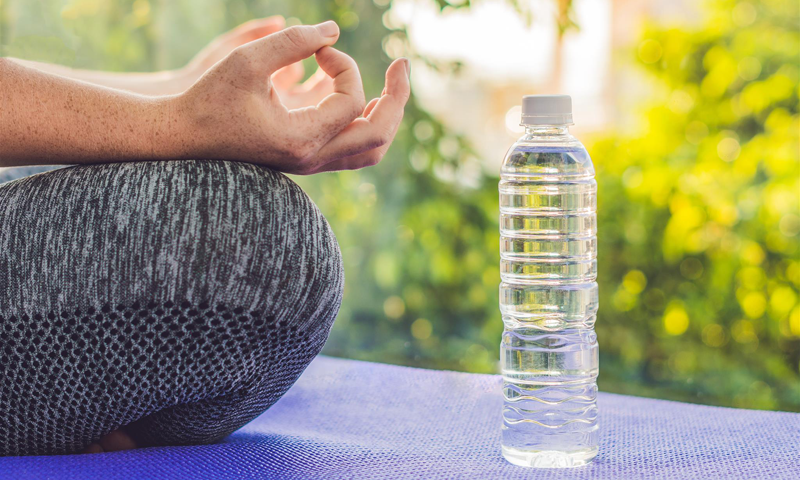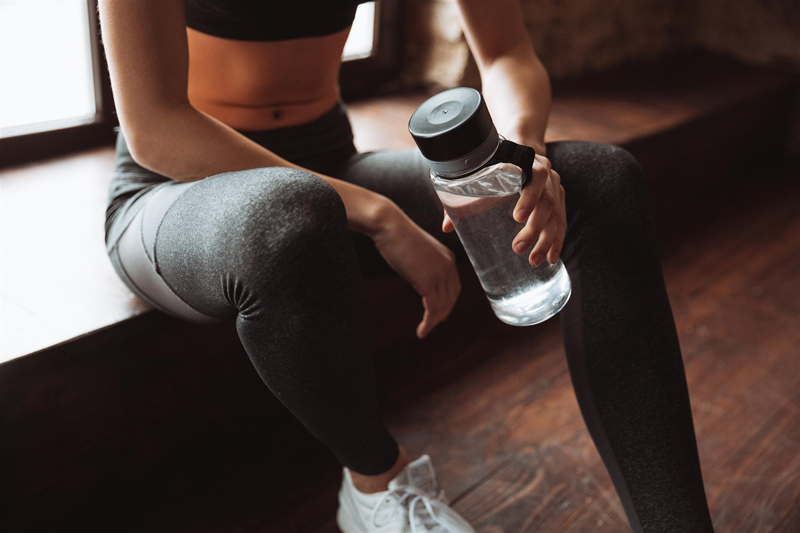
Ana Heart will be featured in Moda Operandi
6th August 2018
What is Kshanti Yoga?
16th August 2018Water and Yoga: How and When to Hydrate

As with any form of exercise, it’s important to stay hydrated when practising yoga. However, unlike most other exercises, it’s best to leave your water bottle alone whilst you practice. While this may sound coun-terintuitive, drinking water has a range of physiological and energetic effects on the body that can interfere with your practice. With this in mind, it’s best to top up on fluid before and after each session. Make sure to pack a bottle of fresh water in your yoga bag so you can re-hydrate after class. Knowing how and when to hydrate can seem tricky at first, but it will soon become second nature. In this article, we explore water and yoga in more detail.
How Much Water Should You Drink?
While we all know it’s important to drink enough, many of us are unclear on how much water we should drink. Many people follow the advice to drink when you’re thirsty; however, thirst is a sign that your body is already dehydrated. Until recently, it was recommended to drink eight glasses of water per day, but now most health professionals agree that individuals require different amounts of water. The amount of water your body needs can depend on your body type, lifestyle, environment, and even your gender. For instance, people who live in a hot environment are going to need more water than those living in a colder climate. The same goes for those who exercise frequently. As it is recommended to drink in proportion to your body size, men often need more water than women due to their bigger mass. To make matters even more confusing, your diet also contributes to your daily liquid consumption; if you are eating food that is high in water, you will need to drink less than those who are not.
While a health professional can advise you on how to much to drink, many people prefer to listen to their body. If you’re experiencing light-headedness, headaches, or a dry mouth, you’re probably not drinking enough. Other signs of dehydration are infrequent urination, dark urine, and constipation. If you notice signs of dehydration, don’t panic! Over time, you will get used to the amount of water your body needs.
Although it’s important to drink enough, it’s also possible to over-hydrate. When you consume too much water, you begin to lose electrolytes through frequent urination. As the electrolytes are needed to digest food, over-hydration can result in stomach cramps and diarrhoea. Other signs that you are drinking too much water include frequent urination, clear urine, and excessive thirst.
Tips for Drinking Water
If you’re drinking enough water but still feel thirsty, your body may not be absorbing it properly. Fortunately, there are a variety of ways to help the process along.
If your body struggles to absorb liquid, avoid drinking chilled water. Although it can be tempting to drink a cold drink, it can be harder to absorb than room-temperature liquid. Many yogis consider Agni when drinking water – the digestive fire that we need to flow prana through the body. Cold water is the enemy of Angi, and some yogis class cold water as a poison to the digestive system. To stay optimally hydrated, it’s best to drink warm or tepid water. The warmth stimulates the digestive system and circulation, making it easier for the body to absorb the liquid. Many practitioners recommend drinking a large glass of water first thing in the morning; in Sanskrit, this practice is referred to as Ushapan. For optimal absorption, sip the water slowly whilst in a seated position.

Water and Yoga
As drinking has a range of physiological and energetic effects on the body, it’s best to avoid drinking water whilst you practice. Instead, you should start each day with a large glass of water and sip periodically throughout the day. If you stay hydrated before each class, it’s unlikely that you will need to drink during the session. To maintain hydration, it is advised to drink eight ounces of water before your class. If possible, avoid drinking water immediately before your class, though. It’s best to leave at least 30 minutes between drinking and exercising. As well as making you feel bloated, consuming copious amounts of water before your session can affect your energy body.
During an intense physical activity, we often confuse a need for water with a need for air. Although you may feel thirsty, you may be able to combat this feeling with controlled breathing. For many yogis, the feeling of thirst is a common distraction during asana practice. However, resisting the unnecessary urge to drink can help to build self-discipline and strength. If you start to feel thirsty, try taking a few deep breaths. If this doesn’t help, you may truly need to drink; sip on your water slowly without letting it become a distraction. Before your next session, remember to have a drink 30 minutes before class to avoid dehydration.
In Summary
To avoid interfering with your practice, remember to top up on water before your yoga class. For optimal hydration, sip on a glass of warm water 30 minutes before you start. Many practitioners confused the need for water with the need for air. If you feel thirsty during the session, try taking a few deep breathes before reaching for your bottle; If the sensation continues, take a sip of your drink without distracting yourself or others. To allow your body to oxygenate sufficiently, it’s important to wear a breathable yoga top and a lightweight pair of leggings to each class. Not only will this keep your body cool, but it will also help to avoid dehydration.

